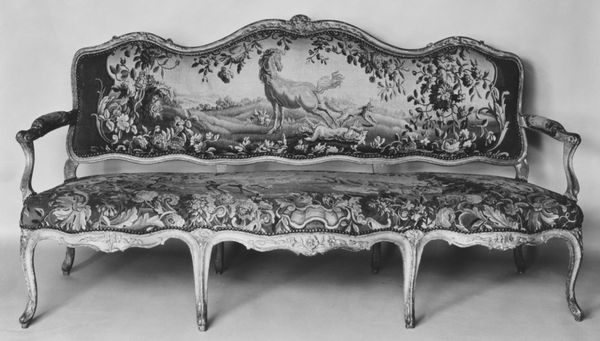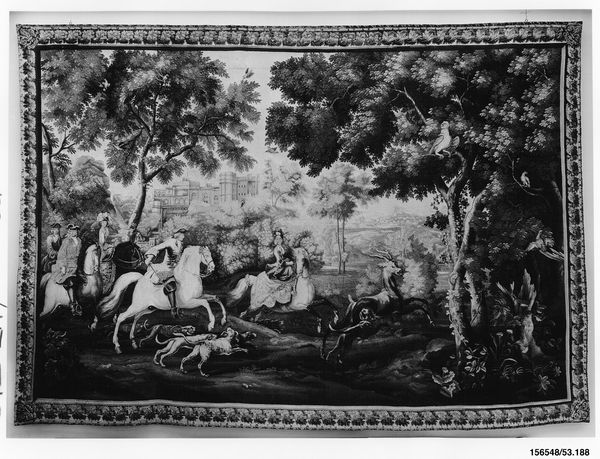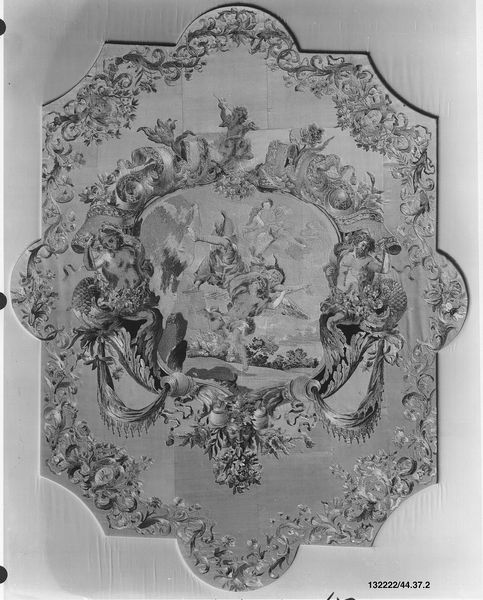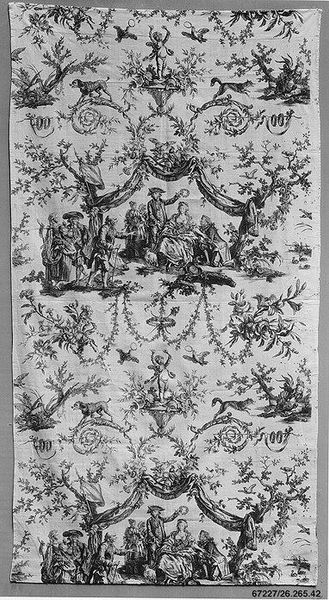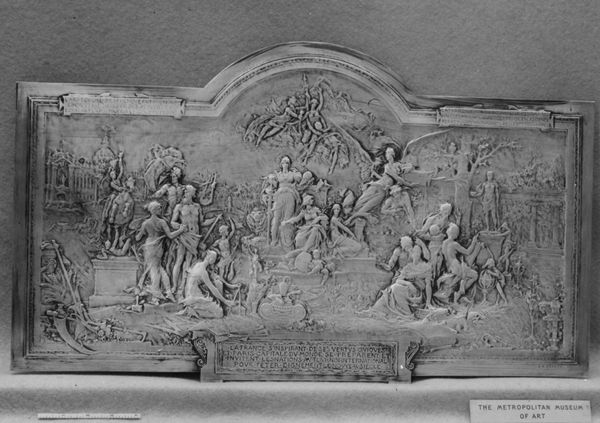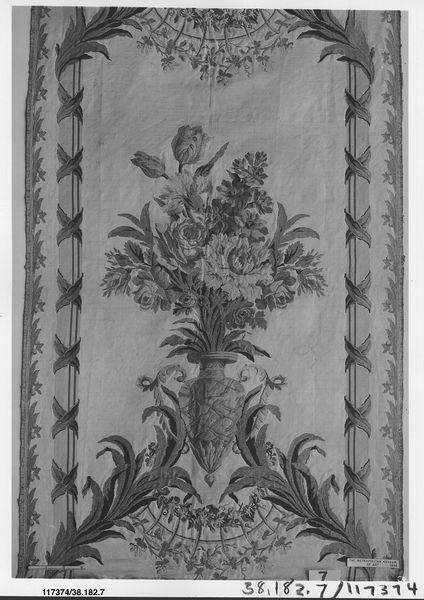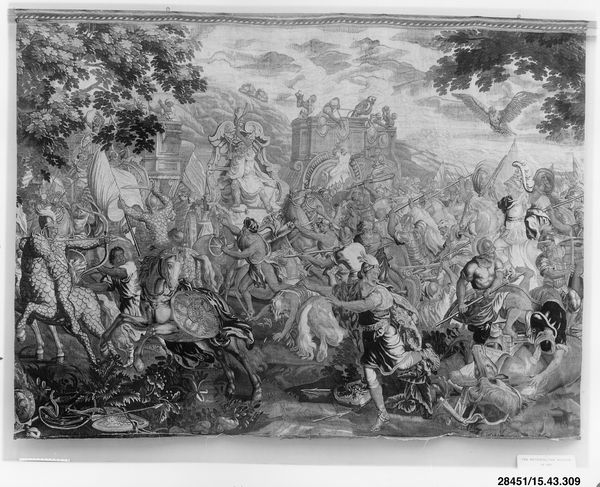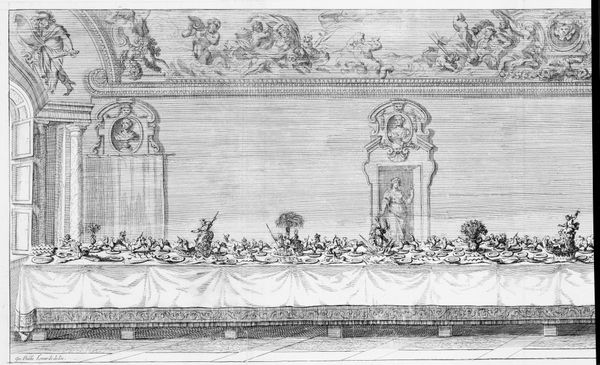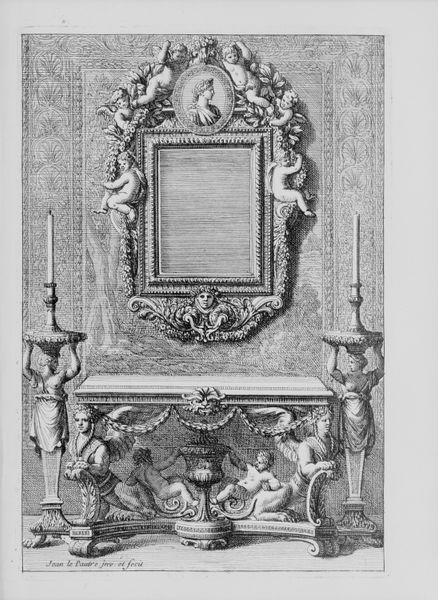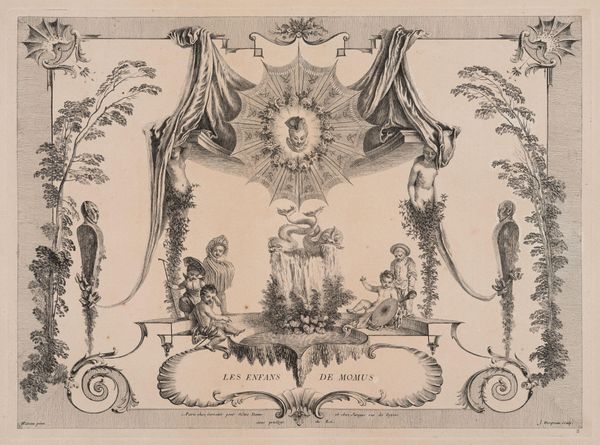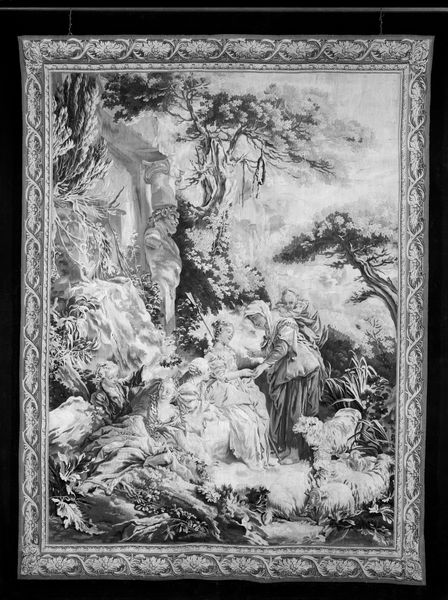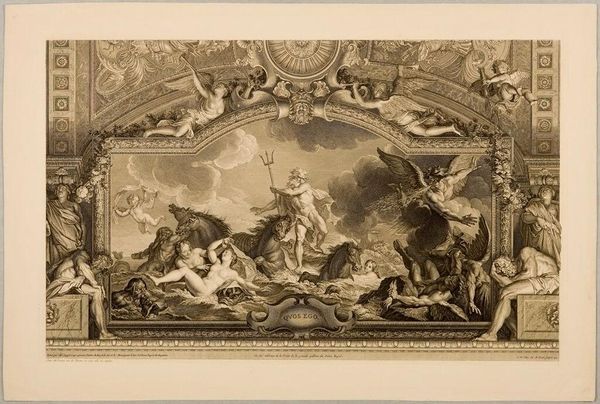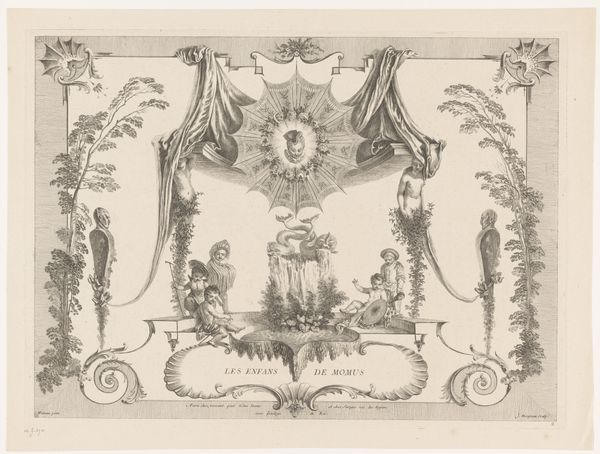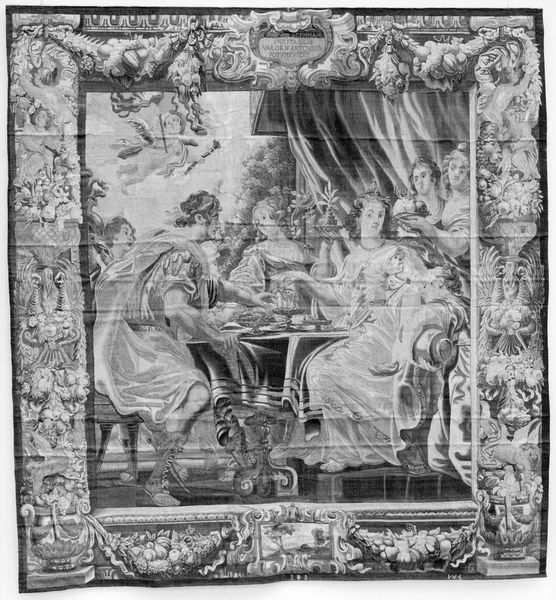
The Swing, The Harvest, and Cherry Picking from a set of the Pastorals with Blue Draperies 1775 - 1795
0:00
0:00
Dimensions: 11 ft. 8 in. × 19 ft. 3 in. (355.6 × 586.7 cm)
Copyright: Public Domain
Curator: We’re standing before "The Swing, The Harvest, and Cherry Picking from a set of the Pastorals with Blue Draperies," created by Jean-Baptiste Huet I between 1775 and 1795. Editor: The scene is whimsical; almost dreamlike with figures frozen in idyllic labor and playful leisure. Curator: Indeed. While seemingly a painting, it is actually a design intended for textile production, specifically a large-scale wallpaper or tapestry. The "blue draperies" mentioned in the title would likely have been added as a contrasting element in the finished product. We see clear influence of the Rococo style in its composition, with elaborate ornamentation meant for interior design. The very choice of a pastoral theme speaks volumes about the intended consumer: most likely the aristocracy longing for simpler pleasures far removed from textile production. Editor: That is well explained, and if we disregard its use and intention as ornamentation and engage with the artwork on a formal level, the eye is led by gentle curves to create visual harmony in its overall shape. The balance between foreground and background is also well distributed to give it depth and structure, leading the eye deeper into each scene. What sort of semiotic discourse do you imagine it might prompt from viewers in its original context, in terms of communicating cultural meanings for the consumer, for example? Curator: Precisely that, I imagine. While appearing effortless and decorative, the work is born out of specific production methods. Understanding the source of pigments, weaving techniques and labor put into its making makes us wonder about class distinctions, especially during the late 18th century, leading towards Revolution! Editor: It definitely highlights that period in history and shifts my first, immediate impressions. Even so, observing the linear patterns, and subtle differences in tonal variation, can still take one on a peaceful journey, through its elegant rendering. Curator: Seeing how context and the mechanics of creation give us the tools to approach something far beyond just aesthetic judgement—I always find such enlightenment! Editor: Indeed, this work is full of rewarding areas of exploration for both the viewer and art historian. Thank you for your insights.
Comments
No comments
Be the first to comment and join the conversation on the ultimate creative platform.
